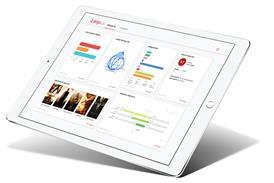All IBC2017 articles – Page 3
-
 Technical Papers
Technical PapersScalable distribution system for IP broadcasting
IP-based networks, both wired and wireless are expected to deliver commoditisation of media objects to consumers.
-
 Technical Papers
Technical PapersUsing LTE Broadcast for a media optimised network
Providing the best viewing experience with superior quality, Telstra netwokr in Australia have LTE Broadcast, extending beyond the current unicast pull-based approach.
-
 Technical Papers
Technical PapersA brightness measure for HDR TV
The industry is taking its first steps in HDR production, as standards for a complete high dynamic range (HDR) television ecosystem near completion.
-
 Technical Papers
Technical PapersTone mapping influences the bit-rate and the bit depth
HDR will need a higher bit-rate because of its minimum quantisation and the fact that the images have much more details in the highlights and shadows.
-
 Technical Papers
Technical PapersBeyond HEVC: video coding standardisation
Though High Efficiency Video Coding (HEVC) is still in its take-up phase, it is foreseeable that even better compression will be needed in the future.
-
 Technical Papers
Technical PapersAutomatic sound source localisation for object-based audio recording
The ORPHEUS research project aims to invent new workflows for producing, broadcasting and playing back object-oriented audio content.
-
 Technical Papers
Technical PapersEnhanced next generation audio for live sports broadcast
Sports broadcasters benefit from a more adaptive scenebased audio capture and rendering, commonly referred to as Next Generation Audio (NGA).
-
 Technical Papers
Technical PapersORPHEUS audio project
Object-based media is a revolutionary approach for creating and deploying interactive, personalised, scalable and immersive content.
-
 Technical Papers
Technical PapersCharacterisation of processing artifacts in HDR
The new Ultra High Definition (UHD) TV standards define a container which allows content creators to offer the consumer a much more immersive visual experience.
-
 Technical Papers
Technical PapersAn end-to-end approach for delivering data-driven stories
With the sheer scale of digital information now available, many journalists have recently started using data in order to tell compelling stories.
-
 Technical Papers
Technical PapersBig data for journalism and enhanced business analytics
Big data has become mainstream with the recent evolution of cloud infrastructures, data gathering and intelligence algorithms.
-
 Technical Papers
Technical PapersAI in media and making security smarter
Artificial Intelligence technology develops in the media space, its application in security must focus on more than closing gaps and locking down assets.
-
 Technical Papers
Technical PapersReal-Time semantic enrichment of video streams in the age of big data
AgileRAI, a framework for searching, organising and accessing multimedia data in a fast and semantic-driven way.
-
 Technical Papers
Technical PapersIntegrating forensic watermarking into adaptive streaming workflow
Forensic watermarking is a process of embedding a unique identifier for each streaming video session into the video content.
-
 Technical Papers
Technical PapersWireless links for 8K Super Hi-Vision
The Super Hi-Vision (8K) regular broadcasting through broadcasting satellite will start in 2018.
-
 Technical Papers
Technical Papers8K/HLG broadcasting camera system
The first NHK 8K camera employed 4K image sensors, the second model used an 8K single-chip colour image sensor offering compatibility with digital cinema lenses.
-
 Technical Papers
Technical PapersITU-R study group 6 for the future of broadcasting
Leading the international standardisation of the end-to-end broadcasting chain from the production of programmes to their ultimate delivery to the audience.
-
 Technical Papers
Technical Papers5G technology for live production
A new emerging 5G technology with phased array antennas was used for the contribution of live TV documentary broadcast in Norway.
-
 Technical Papers
Technical PapersPerspectives of TV convergence towards 5G
The new eMBMS systems characteristics are well aligned to the technical requirements coming from the broadcast sector for TV services.
-
 Technical Papers
Technical Papers360 cinematic literacy: A case study
360 degree film making necessitates a new language for storytelling, the case study is based on material from two user studies on a 360 video profile of an artist.

















